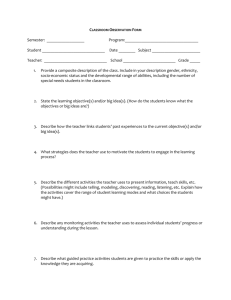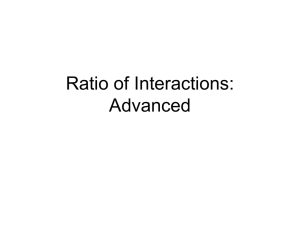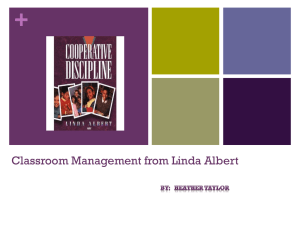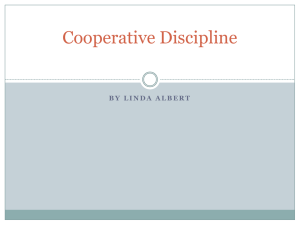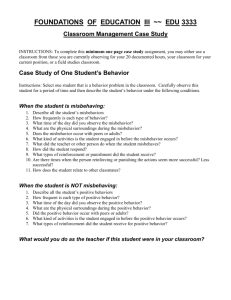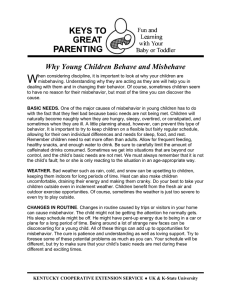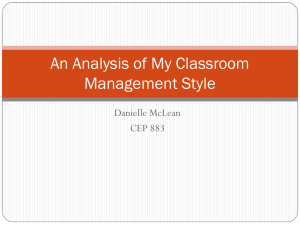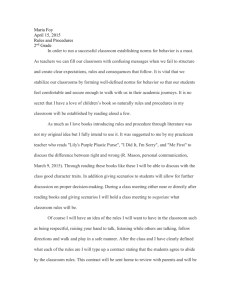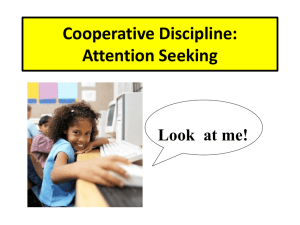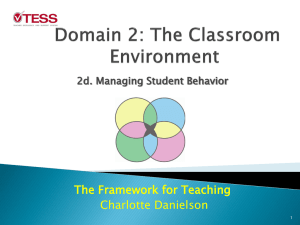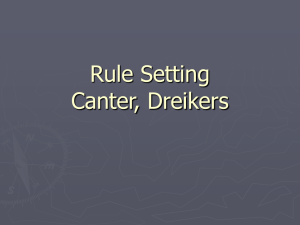Coop Disc 1
advertisement
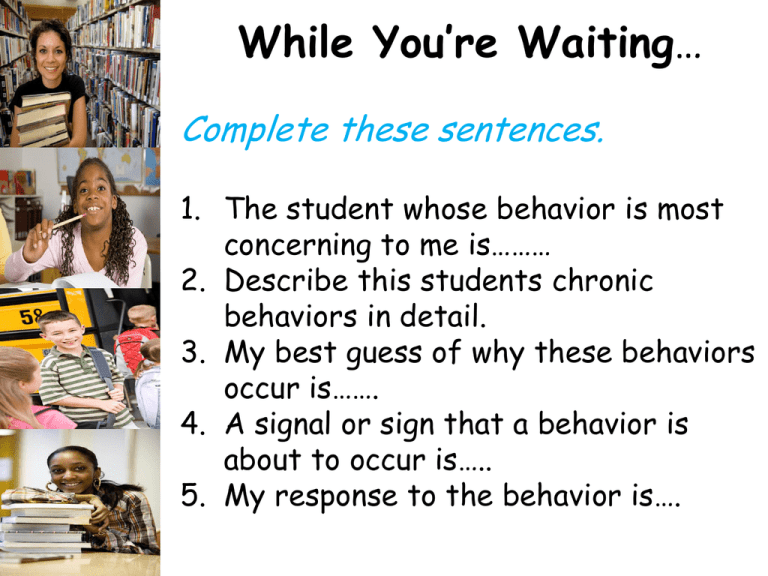
While You’re Waiting… Complete these sentences. 1. The student whose behavior is most concerning to me is……… 2. Describe this students chronic behaviors in detail. 3. My best guess of why these behaviors occur is……. 4. A signal or sign that a behavior is about to occur is….. 5. My response to the behavior is…. Cooperative Discipline: An Introduction Anne Arundel County Public Schools Dr. Linda Albert, Educator, counselor, lecturer and syndicated columnist Characteristics of Frame Appropriate Behavior Frame of Reference Understanding Misbehavior Will Help You to Put the Pieces Together What do the experts say about today’s schools? US Dept. of Education Fox News www.myfoxny.com/dpp/news/e ducation/nyc-school-disciplinecode-hearing-20100623-akd NBC News http://www.msnbc.msn. com/id/21134540/vp/ 30599940#30599940? subject=Student in handcuff Why do students misbehave? They like to annoy us…. They are not aware that they are misbehaving…. They need something…. No one has taught them how to behave… The Goal: Cooperative Relationships In and Beyond the Classroom Cooperative Discipline: Time-Tested and Practical • A synthesis of theories about behavior and discipline from Adler, Dreikurs, Glasser, Ellis, and Berne. • Developmentally appropriate. • Designed to teach collaborative skills. • Respectful. Cooperative Discipline Uses the Action Plan Process A diagnostic and preventative tool. 1. 2. 3. 4. Pinpoint and describe the behavior. Identify the goal of the misbehavior. Choose intervention techniques for the moment of misbehavior. Select encouragement techniques to build self-esteem. The entire school community wins! Teachers Students Parents Administrators Pillar 1: Students choose their behavior. Do you know the difference in •Conduct Disorder •Emotional Disturbance? Pillar 2: The ultimate goal of student behavior is to fulfill the psychological and emotional need to belong. Cooperative Discipline: The Three C’s are needed to feel a sense of belonging. •Capable •Connect •Contribute Pillar 3: Teachers can choose their behavior. •Hands-Off Style •Hands-On Style •Hands-Joined Style Hands-Off Style •Permissive, hands-off style of management. •Allows students to push the limits and make poor behavioral choices. Hands-On Style Teachers sounds like… •Do it because I told you to…. •I’m in charge here… •This is my classroom…. Students react with… •You can’t make me…. •So what….. •I’ll rebel and upset your classroom…. Hands-Joined Style Looks like…. •Teachers and students work cooperative together. •“Personality Conflicts” disappear. •Students are included in the decision making process. (CDM) Pillar 4: Not all off-task behavior is misbehavior. Before determining that there is a behavior problem ask yourself these questions: •Is the level of instruction appropriate for this student? •Are the methods, materials, and pacing appropriate for this student? Pillar 5: “Difficult students” may need the most encouragement. •Label for students that do not fit the typical classroom role. •Imply that something is wrong or broken with the student. •Imply that misbehavior is a personality trait or flaw. Group Activity In a small group, discuss each of the pillars, looking closely at elements within a teacher’s control. Then answer these questions: 1. How can I implement the pillars in my classroom? 2. Will student behavior change if I implement the pillars? Maslow’s Hierarchy Self-actualization Esteem Love and Belonging Safety Physical Needs Why do students misbehave? Nationally, it is believed that misbehavior is used to achieve a one of theses self-serving reasons : • • • • Attention Power Revenge Avoidance of Failure (Advantage Press, 2003) Standard Instrument for determining the function: Functional Behavioral Assessment • Done by a committee. • Looks at a variety of environments, triggers, interventions, and reasons for the troubling behaviors. How can we use this info? • Provide alternative, positive ways for the student to get what they want and need. • Hopefully pro-actively avoid the triggers. • Look at students differently when we understand their needs. Know Your ABC’s • Antecedent: What happened first? What was the trigger? • Behavior: What occurred after the trigger? • Consequence: What is the student gaining by reacting to the trigger? Is the student setting themselves off or is there truly a trigger? Why is analysis of the behavior important? • Understanding the sequence of events allows you to de-rail the triggers. • Alternative replacement behaviors can be designed, taught, and reinforced. • Allows you to develop a rapport with the student once you understand what they are dealing with. Activity Think of a student in your class that is having difficulties---Do a brief analysis of what the function their behavior serves. • Think of 2 pro-active strategies that you might try. Share your ideas with your peers in class or in the discussion area.
